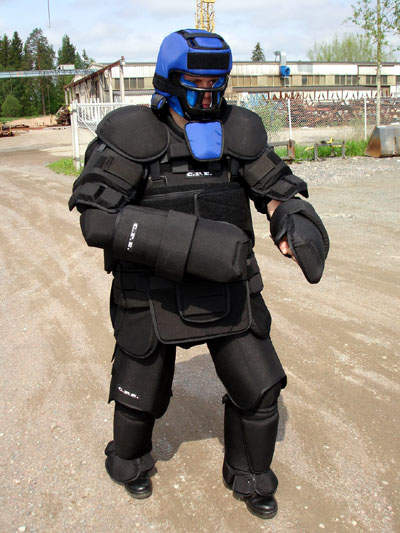Wearing Protective Gear Against Asbestos
Wearing Protective Gear Against Asbestos
Although now we know that asbestos is a carcinogen, it was in widespread use before this finding. This means that numerous buildings, including offices, homes, and schools, all utilized this material before it was banned in the late 1980s. To remove asbestos from buildings or other items, people must wear protective gear.
 |
| Protective Gear |
At one point, this material could be found in everything from vinyl flooring to roof tiles, wall insulation to water pipes. Additionally, it is still a component in brake pads, clutch disks, and brake shoes as well as gaskets. Although it is now banned, asbestos can also be found in older buildings that have not been remodeled or renovated to rid them of this material.
Asbestos does not become dangerous until it begins to release microscopic fibers into the air. From here, you can inhale or ingest the fibers, which may then become lodged in your body's tissue where it can spur the formation of cancerous tumors. Items containing asbestos that is able to flake off is called friable, while material that cannot release asbestos is called non-friable.
When asbestos is friable, specialized companies must remove it using safety gear to protect them from inhaling or ingesting the fibers. There are several components of safety gear to make sure a person is fully protected, including:
Respirators - these are masks that cover half of the face in order to keep a person from breathing in asbestos fibers.
Coveralls - coveralls that include feet should be worn during contact with asbestos, then thrown away so that stray fibers do not get caught in the clothing to later spread to someone else.
Rubber gloves - strong, disposable gloves keep asbestos fibers from becoming lodged in your skin and causing asbestos warts. Like coveralls, these should be safely thrown away after one use.
Rubber boots - pull-on boots that go over the booties of your coverall protect your feet and lower legs.
Eye gear - wearing ventilated goggles keeps the sensitive tissue of your eyes from suffering from asbestos fibers.
Sadly, protective gear isn't always enough. Asbestos exposure causes tragic diseases such as lung cancer and mesothelioma. If you or someone you know has suffered from asbestos-related health issues, you should speak to a lawyer about your options.
For more information, call an asbestos attorney from Williams Kherkher today.
0 Response to "Wearing Protective Gear Against Asbestos"
Post a Comment